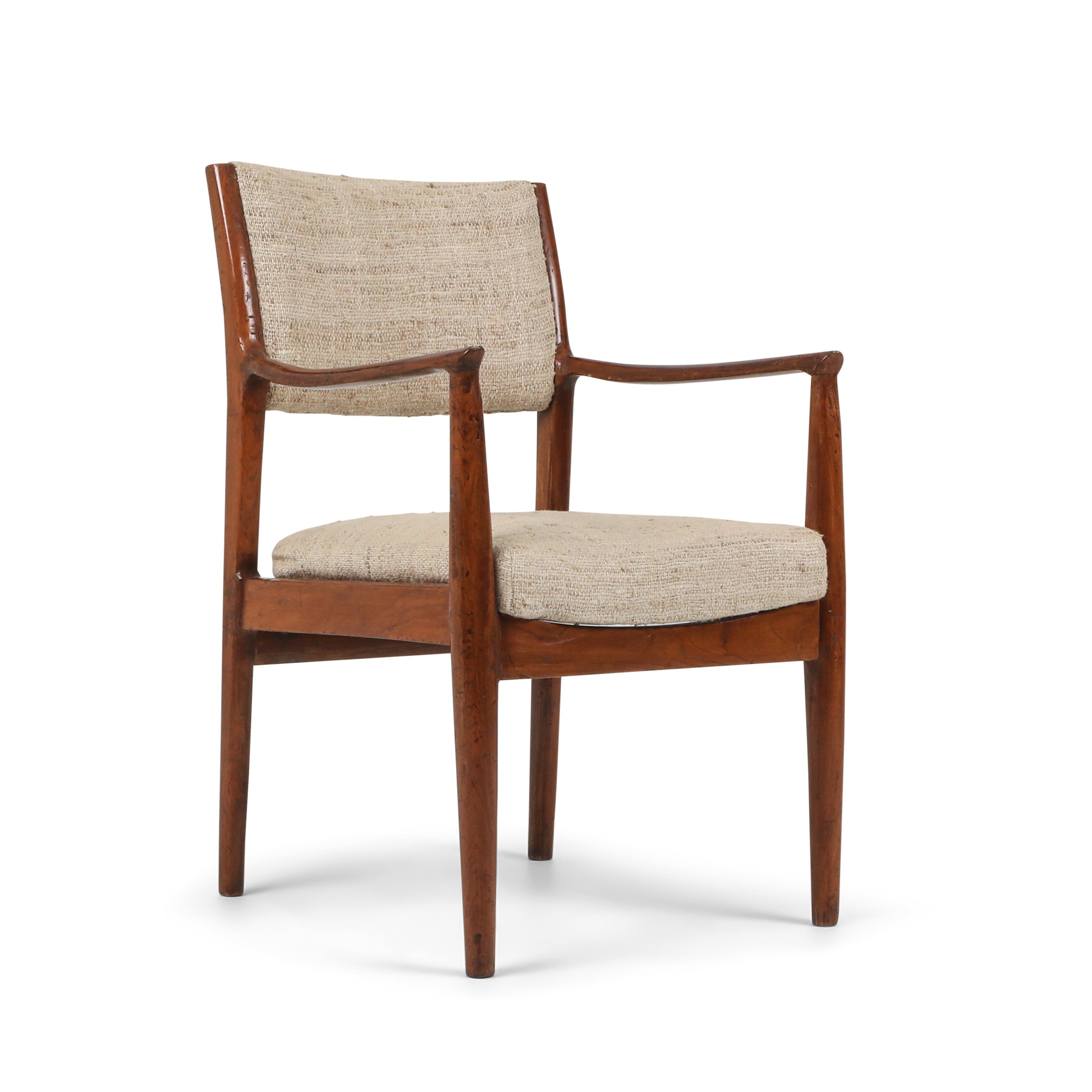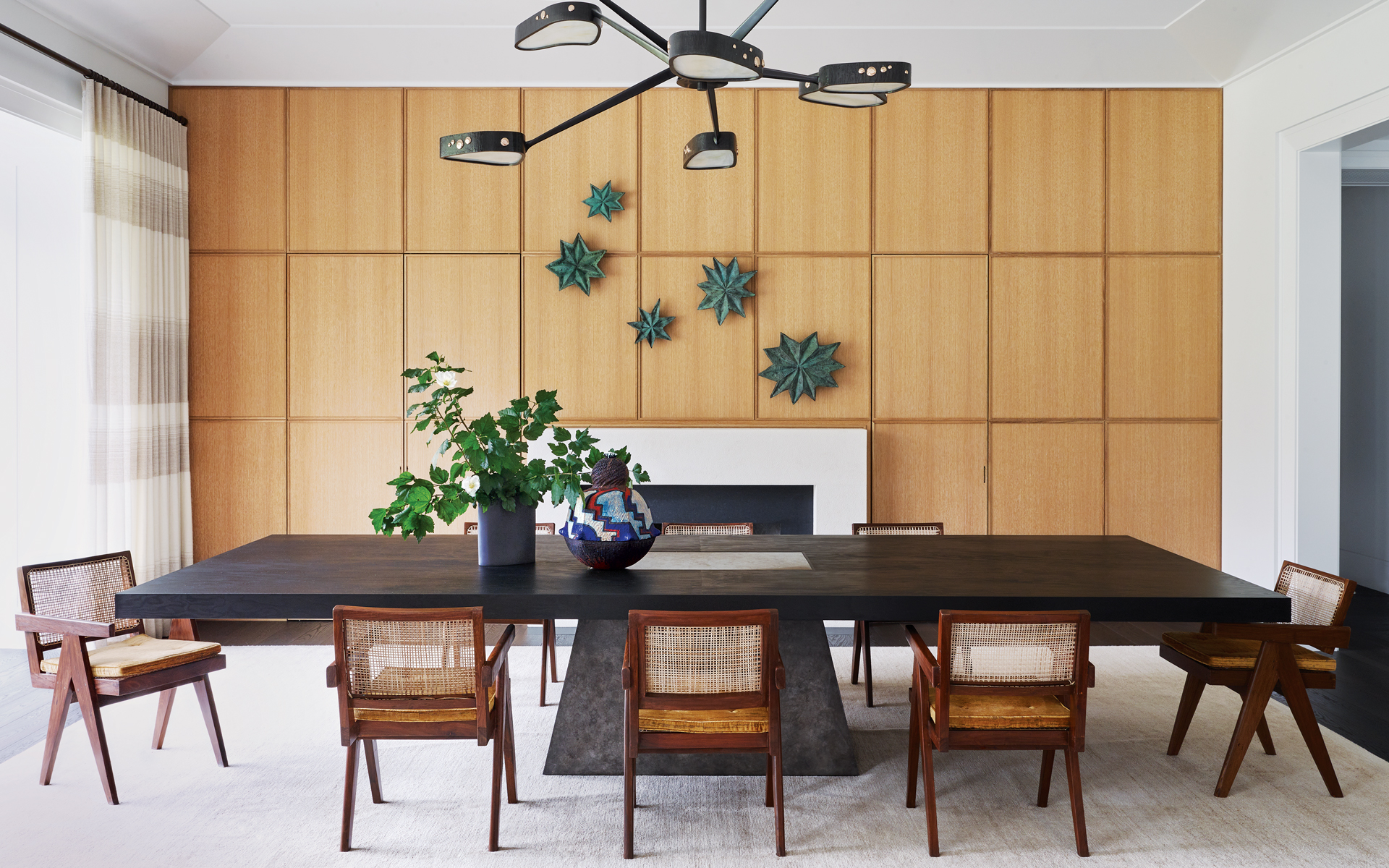The Legacy of Pierre Jeanneret

Pierre Jeanneret, a Swiss architect and designer, played a pivotal role in shaping the modernist movement in architecture and design. He is best known for his close collaboration with his cousin, the renowned architect Le Corbusier, and for his own distinctive contributions to the design world.
Jeanneret’s Design Philosophy and its Influence on his Furniture
Jeanneret’s design philosophy was deeply rooted in the principles of modernism, emphasizing functionality, simplicity, and a focus on the use of materials. His furniture designs reflected these ideals, showcasing clean lines, geometric forms, and a rejection of ornamentation. He believed that furniture should be both practical and aesthetically pleasing, serving a purpose while also enhancing the surrounding environment. The dining chair, a key piece in Jeanneret’s furniture repertoire, embodies these principles, with its simple structure, comfortable seating, and elegant form.
Comparing Jeanneret’s Dining Chairs with Other Iconic Furniture Pieces of the Era
Jeanneret’s dining chairs stand out as significant contributions to the furniture design of the 20th century. They are often compared to other iconic furniture pieces of the era, such as the Barcelona Chair by Mies van der Rohe and the Wassily Chair by Marcel Breuer. While these chairs share a common modernist aesthetic, Jeanneret’s dining chairs offer a unique blend of simplicity and elegance, characterized by their use of natural materials, such as wood and cane, and their focus on comfort and functionality.
The Pierre Jeanneret Dining Chair


The Pierre Jeanneret dining chair, a masterpiece of modern design, is a testament to the architect’s commitment to functionality and aesthetics. Its distinctive form and elegant simplicity have earned it a place among the most iconic furniture pieces of the 20th century.
Design and Features
The Pierre Jeanneret dining chair embodies the principles of modernism, prioritizing functionality and simplicity over ornamentation. Its design is characterized by clean lines, geometric shapes, and a focus on materials and construction.
The chair’s frame is typically constructed from steel tubing, a material known for its strength and durability. This choice reflects the modernist emphasis on industrial materials and their inherent qualities. The steel frame is often powder-coated in a range of colors, adding a touch of visual interest and protection against wear and tear.
The chair’s seat and backrest are typically made from cane, a natural material known for its breathability and comfort. The cane is woven into a tight, intricate pattern, creating a strong and supportive surface that allows for air circulation. This design choice not only enhances comfort but also adds a touch of handcrafted elegance to the chair.
The Pierre Jeanneret dining chair is also known for its distinctive angled legs, which contribute to its stability and unique aesthetic. The angled legs create a sense of movement and dynamism, adding visual interest to the chair’s form.
Ergonomic Design
The Pierre Jeanneret dining chair’s design prioritizes user comfort. The chair’s contoured backrest and angled seat provide support for the spine and promote good posture. The chair’s height and proportions are carefully considered to ensure optimal comfort for the user. The use of cane for the seat and backrest allows for air circulation, preventing the chair from becoming uncomfortable during extended periods of use.
Modernist Principles
The Pierre Jeanneret dining chair embodies the principles of modernism, prioritizing functionality and simplicity over ornamentation. Its design is characterized by clean lines, geometric shapes, and a focus on materials and construction.
The chair’s steel frame, cane seat and backrest, and angled legs are all elements that reflect the modernist emphasis on industrial materials, functionality, and craftsmanship. The chair’s minimalist design and lack of unnecessary ornamentation highlight its inherent beauty and functionality.
The Pierre Jeanneret dining chair is a timeless piece of furniture that continues to inspire designers and furniture enthusiasts today. Its iconic design, ergonomic comfort, and enduring functionality make it a valuable addition to any home or workspace.
The Pierre Jeanneret Dining Chair


The Pierre Jeanneret dining chair, a masterpiece of modern design, transcends its functional purpose to become a symbol of elegance, comfort, and cultural influence. Its enduring popularity and impact on modern interior design continue to inspire designers and enthusiasts alike.
Cultural Impact and Significance, Pierre jeanneret dining chair
The Pierre Jeanneret dining chair’s popularity stems from its unique blend of functionality, aesthetics, and cultural relevance. It has become a sought-after piece for its distinctive design, its ability to seamlessly blend into various settings, and its historical significance. The chair’s influence extends beyond its presence in homes and offices; it has become a symbol of modernism and a testament to Jeanneret’s design genius.
- The chair’s popularity has contributed to the revival of mid-century modern design, influencing contemporary interior design trends and inspiring new interpretations of classic forms.
- The chair’s versatility allows it to be incorporated into various spaces, from minimalist apartments to grand dining halls, reflecting its adaptability and enduring appeal.
- The chair’s historical significance as a product of the Chandigarh project, a monumental collaboration between Le Corbusier and Pierre Jeanneret, adds to its cultural value.
Notable examples of the chair’s use in iconic architectural projects and spaces demonstrate its versatility and cultural significance. The chair’s presence in the High Court of Chandigarh, a landmark building designed by Le Corbusier, underscores its association with architectural excellence. The chair’s use in the Capitol Complex, another prominent project in Chandigarh, further solidifies its role as an integral part of modern architectural history.
The chair’s enduring appeal lies in its timeless design, its ability to evoke a sense of history and elegance, and its enduring relevance in contemporary design. The chair’s simple yet elegant form, its comfortable seating, and its high-quality craftsmanship contribute to its enduring appeal. Its continued relevance is reflected in its use in modern interiors, where it serves as a reminder of the enduring power of classic design.
You know, I love the minimalist, almost brutalist design of the Pierre Jeanneret dining chair. It’s like a statement piece, a “look at me, I’m edgy” kind of vibe. But for a more traditional, “I’m the boss, sit down and listen” look, you can’t beat a good old-fashioned boss traditional black executive chair.
Maybe I’ll pair a Jeanneret chair with a big, leather executive chair – a clash of styles for a truly unique look, like a minimalist in a three-piece suit.
Okay, so you’ve got this sleek Pierre Jeanneret dining chair, right? It’s a statement piece, like a stylish, minimalist sculpture. But let’s be real, who wants to worry about spills and crumbs? That’s where dining room chair covers from Walmart come in.
They’re like a superhero cape for your chair, protecting it from the chaos of everyday life. Plus, you can change the look with different colors and patterns – just like giving your chair a wardrobe upgrade!
